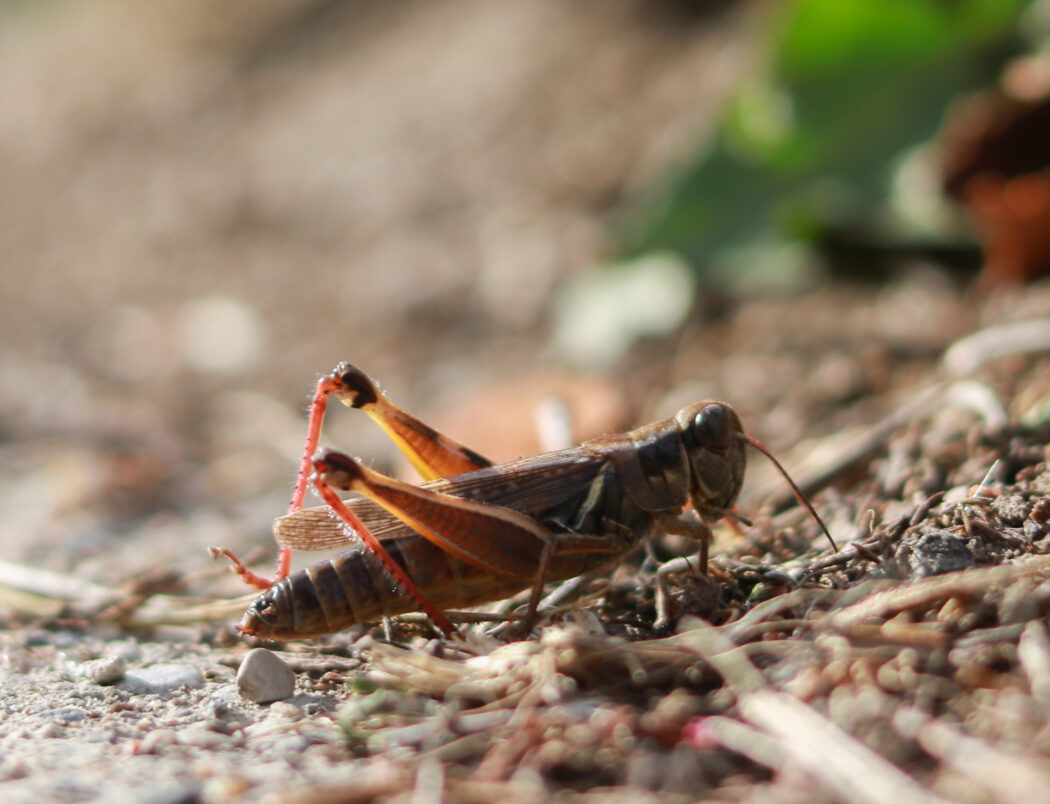USU vs. the grasshopper apocalypse
This semester, while studying outside, you may find yourself joined by frolicking grasshoppers. One even might have decided to hitch a ride on your shoe while walking through campus.
Or maybe you are like Braxton Buttars, a mechanical engineering student who had one grasshopper jump not just onto his leg, but head-on into him.
“There does seem to be a lot of them,” he said.
This upsurge in grasshoppers is not just slightly bewildering, it’s also a threat to gardeners and farmers.
Utah State University’s Extension’s Utah Pest Quarterly Newsletter has dubbed it “The Grasshopper Apocalypse.”
“Grasshoppers just by the nature of them being so highly mobile and so highly destructive, it’s a lot more noticeable,” said Nick Volesky, program associate in USU’s biology department for integrated pest management.
“Flower farms have been hit hard, where the grasshoppers will feed on the leaves, the stem, the fruit of the plant or the actual flower,” Volesky said, “That can cause a lot of economic setbacks.”
“From what I saw this summer, the grasshoppers caused extensive damage to many of our crops— particularly corn, green beans, strawberries and onions.” said Abigail Lazier, the student organic farm manager. “They were definitely worse this season.”
When considering the noticeably high number of grasshoppers this season, Volesky says it is important to look at the lifecycle of grasshoppers and Logan’s recent climate.
Grasshoppers lay their eggs in the late summer and fall underground, so it would be easy to assume the harsh weather would be fatal to them. Contrarily, Volesky said “Their survival is increased by snowpack that provides insulation and prevents desiccation.”
Last winter had the second largest amount of snowfall as recorded by Extreme Weather Watch. The website states the winter of 2022-2023 had 134.8 inches of snowfall.
It would be easy to assume the harsh weather would be fatal to insects like grasshoppers.
Contrarily, according to Volesky, “Their survival is increased by snowpack that provides insulation and prevents desiccation.”
Wet and rainy conditions, however, promote infections and contribute to population crashes, shares Utah Pest.
“If the spring conditions are usually hot or dry, which we have pretty often in Utah, the eggs will hatch a lot faster,” Volesky said.
These climate conditions contributed greatly to the outbreak of grasshoppers this season, according to Utah Pest.
Volesky said gardeners have a few different options for grasshopper management.
“Row covers are 100% effective,” Volesky said. They physically exclude the grasshopper from eating plants by covering them in a mesh or a spun down fabric.
Volesky also recommends for garden owners to hand remove the grasshoppers. Once removed, placing insects such as grasshoppers, caterpillars and others, into soap and water can help manage infestations.
“Part of the challenge with grasshoppers is they’re really highly mobile,” Volesky said, “It’s hard when managing only a small space, so we usually recommend a community wide grasshopper control.”
The best time to hand remove insects from gardens is in the morning because cold nights make them a lot slower, Volesky said
Row covers and hand removal are ways to maintain grasshopper infestations for those who do not want to use chemical or pesticide control.
If you do not mind these methods, Utah Pest reads, “Bait products using active ingredients such as zeta-cypermethrin + bifenthrin, malathion, permethrin, and carbaryl are labeled for grasshopper use in home gardens.”
If you weren’t ready for the grasshopper apocalypse this season, you can now prepare for next year.
According to Volesky, 2024 will most likely bring another big grasshopper season before we see them diminish due to natural causes. So, if you weren’t ready for the grasshopper apocalypse this season, you can now prepare for next year.
Videos with additional information can be found on USU Extension’s Youtube Channel.

